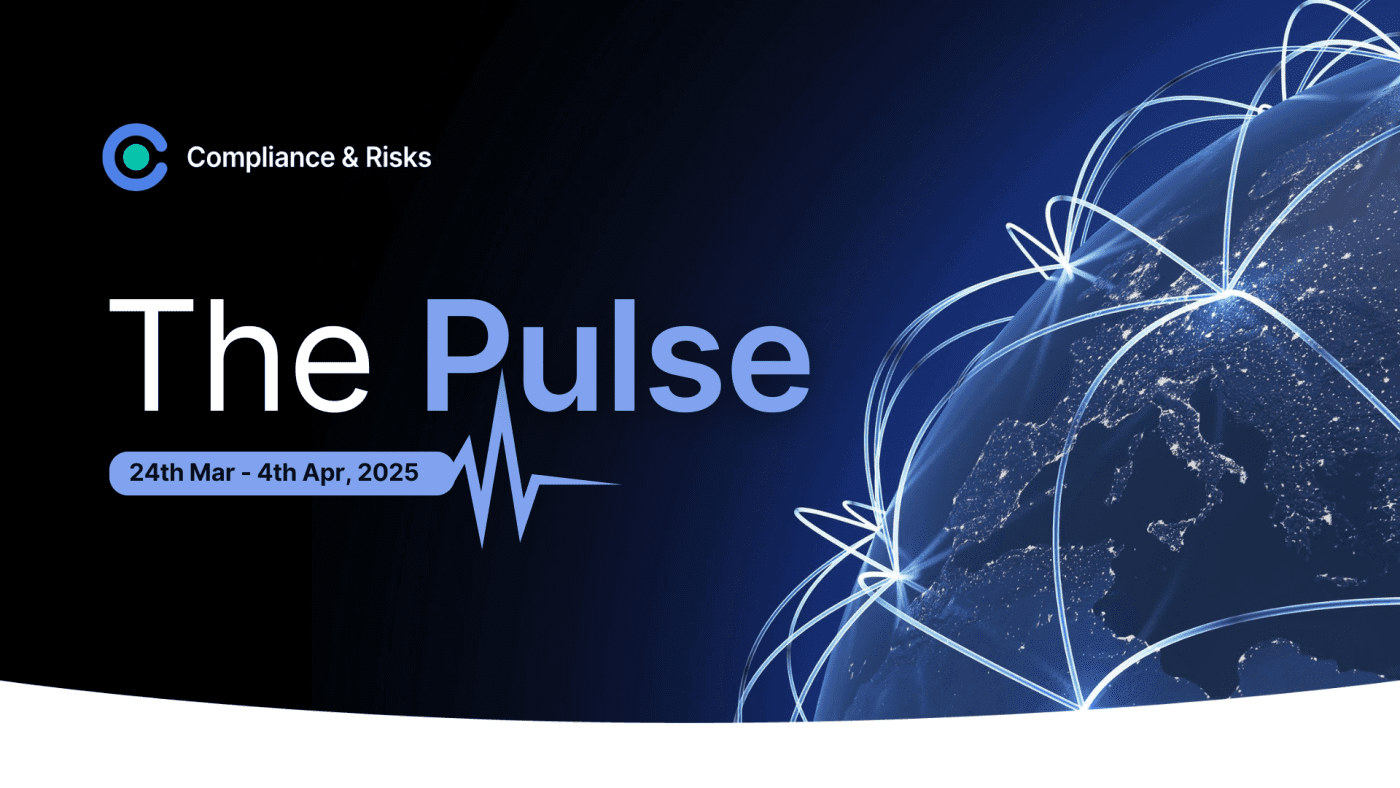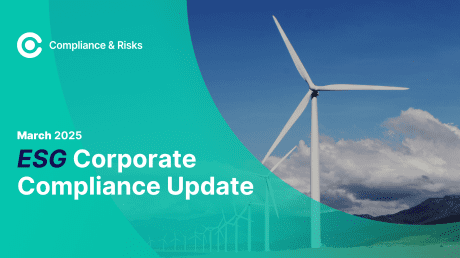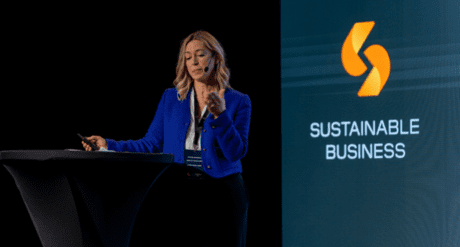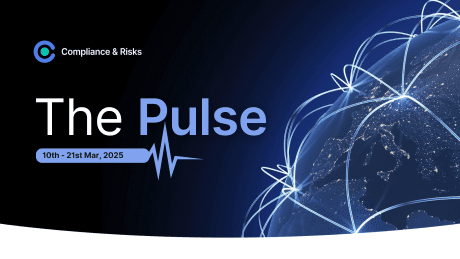
The Biweekly Pulse: 24th March – 4th April 2025

The Pulse was originally posted on 9th April, 2025. Further regulatory developments may have occurred after publication. To keep up-to-date with the latest compliance news, sign up to our newsletter.
Check out what’s hot in our regulatory world with The Pulse! The Pulse is your biweekly source for global regulatory insights.
This week’s trending sources in C2P
- Japan: Labeling Scheme for IoT Products based on Japan Cyber-Security Technical Assessment Requirements (JC-STAR), 2025
- Maine (USA): Implementing the Stewardship Program for Packaging and Draft Initial Packaging Material Types List, Background Document, March 2025
- IATA: Transport of Lithium Metal, Lithium Ion and Sodium Ion Batteries, Revised Guidance Document, January 2025
What is our Content Team talking about?
EU Commission mandates EFRAG with Simplification of ESRS and sets deadline for October 2025
by Hannah Janknecht, Regulatory Compliance Specialist
In a letter published on 27 March 2025, the EU Commission asked EFRAG to prepare the simplification of the European Sustainability Reporting Standards (ESRS).
The simplification efforts are part of the Omnibus Proposal, a regulatory package proposed on 26 February that aims to reduce, postpone and simplify some of the EU sustainability reporting and due diligence obligations. Among other things, the Omnibus Package proposes to reduce the data points contained in the ESRS, provide clarifications and simplify the structure of the reporting standards.
As it was the procedure with the current standards, EFRAG is again asked to initiate the process of changing the content of the standards and the EU Commission will take EFRAG’s advice on board when adopting the delegated regulation to amend the standards. The letter sets out that EFRAG shall be guided by the explanatory memorandum accompanying the Omnibus Proposal.
It is important to note that the Omnibus Package is still in its proposal stage, and it is not clear when and in what form the amendments will be adopted. Therefore, the EU Commission points out that EFRAG is, as of now, asked to prepare the changes to the ESRS until 31 October 2025, but this timeline might change. EFRAG is furthermore asked to confirm its internal timeline to the Commission by 15 April 2025.
What are our Knowledge Partners talking about?
The European Commission publishes guidelines explaining defining AI systems
by RINA
On 6th February 2025, the European Commission published guidelines on the definition of an Artificial Intelligence (“AI”) system under the AI Act. The AI Act does not apply to all systems, but rather those systems that fulfil the definition of an “AI system” within the meaning of Article 3(1) of the AI Act.
Due to the diverse nature and variety of AI systems, the guidelines do not provide an exhaustive list of all potential AI systems. Each system must be assessed on a case-by-case basis to determine whether it constitutes an “AI system”, taking into consideration the seven elements of the definition laid down in Article 3(1) of the AI Act.
Seven key elements
The Guidelines note that the definition of an “AI system” under Article 3(1) of the AI Act contains seven key elements, including:
- Machine-based system – The term ‘machine’ can be understood to include both hardware and software components that enable systems to function. Hardware components refer to the physical elements of the machine (processing units, memory, storage devices etc.) which provide the infrastructure for computation. The software components encompass computer code, instructions, programs, operating systems, and applications that handle how the hardware processes data and performs. All AI systems are machine-based, since they require machines to enable their functioning.
- Autonomy – The second element of the definition refers to the system being ‘designed to operate with varying levels of autonomy. All systems that are designed to operate with some reasonable degree of independence of actions fulfil the condition of autonomy in the definition of an AI system.
- Adaptiveness – The concepts of autonomy and adaptiveness are two distinct but closely related concepts. ‘Adaptiveness’ refers to self-learning capabilities, allowing the behavior of the system to change while in use. The use of the term ‘may’ in relation to this element of the definition indicates that a system may, but does not necessarily have to, possess adaptiveness or self-learning capabilities after deployment to constitute an AI system.
- AI system objectives – AI systems shall be designed to operate according to one or more objectives. The objectives of the system may be explicitly or implicitly defined. Explicit objectives refer to clearly stated goals that are directly encoded by the developer into the system. Implicit objectives refer to goals that are not explicitly stated but may be deduced from the behavior or underlying assumptions of the system.
- Inferencing how to generate outputs using AI techniques – An AI system must be able to infer, from the input it receives, how to generate outputs. AI systems should be capable of the process of obtaining outputs, such as predictions, content, recommendations or decisions, which can influence physical and virtual environment, as well as being capable of deriving models or algorithms. Examples of techniques that enable inference while building an AI system include, for example, machine learning approaches that learn from data how to achieve certain objectives.
- Outputs that can influence physical or virtual environments – The ability of a system, to generate outputs, such as predictions, content, and recommendations, based on inputs it receives and using machine learning and logic and knowledge-based approaches, is fundamental to what AI systems do and what distinguishes those systems from other forms of software.
- Interaction with the environment – Finally, an AI system’s output must be able to influence physical (i.e. to tangible, physical objects) or virtual (i.e. digital spaces or software ecosystems) environments. This element of the definition of an AI system emphasizes the fact that AI systems are not passive, but rather must actively impact the environments in which they are deployed.
Summary
The definition of an AI system encompasses a wide spectrum of systems. The determination of whether a software system is an AI system should be based on the specific architecture and functionality of a given system and should take into consideration the seven elements detailed above. No automatic determination or exhaustive lists of defined AI systems are possible.
The AI Act’s risk-based approach means that only certain AI systems are subject to regulatory obligations and oversight under the AI Act. Most systems, even if they qualify as AI systems within the meaning of Article 3(1) AI Act, will not be subject to any regulatory requirements under the AI Act.
Should you develop AI systems, this guidance (which will evolve and develop over time) should be used to determine whether you fall within scope of the definition. If so, developers shall then determine the classification of their AI system accordingly to identify what (if any) obligations are required to comply with the AI Act.
What are our clients asking about?
“What are the labeling requirements for batteries in India? Is it compulsory to indicate the absence of mercury or cadmium in the label?”
Answered by Andrew O’Neill, Regulatory Compliance Specialist
Under the Battery Waste Management Rules 2022, there is no legal requirement to declare the absence of mercury or cadmium.
Labels must include:
- The chemical composition (e.g., Lead Acid, Li-ion, etc.)
- The crossed-out wheeled bin symbol (for waste segregation)
- The manufacturer/importer name
- Markings regarding recyclability and take-back obligations
You may add such a statement voluntarily for marketing or informational clarity (especially if requested by downstream clients or to align with global practices), but it’s not required under Indian law.
Stay Ahead Of Regulatory Changes with The Pulse
Want to stay ahead of the regulatory developments featured in this edition of The Pulse?
The information in The Pulse is taken from C2P. Accelerate your ability to achieve, maintain & expand market access for all products in global markets with C2P – your key to unlocking market access, trusted by more than 300 of the world’s leading brands.
C2P is an enterprise SaaS platform providing everything you need in one place to achieve your business objectives by proving compliance in over 195 countries.
C2P is purpose-built to be tailored to your specific needs with comprehensive capabilities that enable enterprise-wide management of regulations, standards, requirements and evidence.
Add-on packages help accelerate market access through use-case-specific solutions, global regulatory content, a global team of subject matter experts and professional services.
- Accelerate time-to-market for products
- Reduce non-compliance risks that impact your ability to meet business goals and cause reputational damage
- Enable business continuity by digitizing your compliance process and building corporate memory
- Improve efficiency and enable your team to focus on business critical initiatives rather than manual tasks
- Save time with access to Compliance & Risks’ extensive Knowledge Partner network
Never Miss A Regulatory Update!
Join 30,000+ compliance professionals for monthly updates on hot compliance issues, free regulatory webinars and whitepapers and market insights on the latest trends








